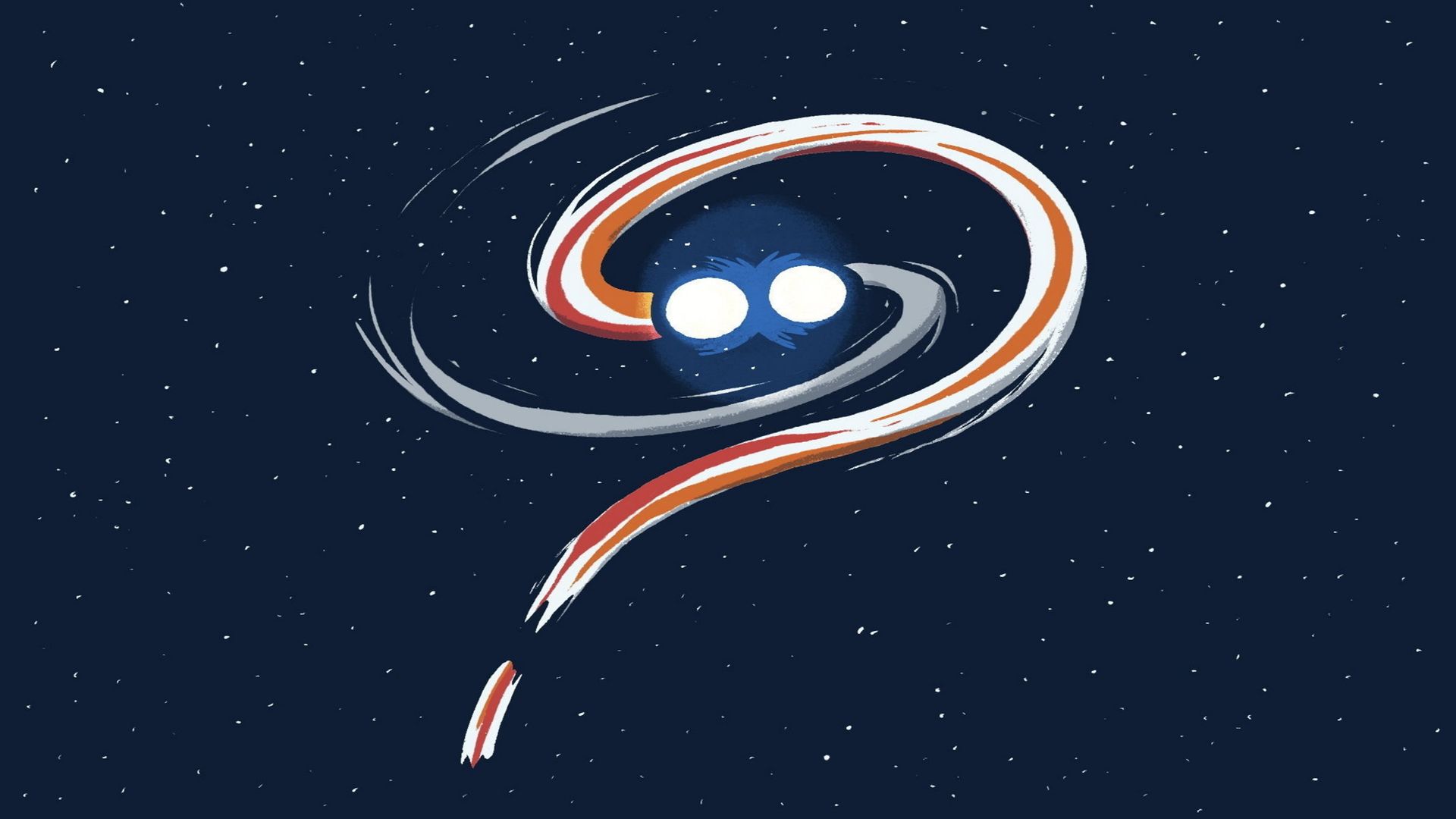The writer is a science commentator
In 2017, scientists detected an extraordinary cosmic event around 140mn light years from Earth. Two neutron stars in a binary system, each with a mass comparable to that of the Sun but compressed into the size of a city, had been rotating around each other uneventfully for 11bn years in ever decreasing circles. Then, in an instant, the superdense duo entered a ferocious death spiral, spinning around each other 100 times a second, before colliding and exploding.
This so-called kilonova event created a black hole and a fresh mystery. A new analysis published in Nature this month shows that the resulting blast was perfectly spherical, rather than pancake-shaped as expected. The clash with prediction hints at the possibility of unexplained physics occurring inside extreme cosmic environments. The geometry of the blast may also offer a promising new method of measuring the age of the universe.
Kilonovas can be thought of as the visually dimmer but more violent cousins of supernovas. Both phenomena involve temporary stellar brightening. Broadly, a supernova happens either when a massive star runs out of fuel and collapses; or when it accumulates material from a neighbour, sparking a runaway nuclear reaction.
In contrast, a kilonova happens when a neutron star, itself the collapsed core of a massive star, collides with either another neutron star or with a black hole. The brief, explosive union becomes a transient heavy metal factory, pumping out elements such as gold, platinum and uranium, and energetically scattering them across the universe. The precious metals mined on Earth today came, scientists think, from meteorites raining down from space.
Studying kilonovas can help to illuminate how some of the heavier elements in the periodic table were created, according to Albert Sneppen, a researcher at the Cosmic Dawn Center at the University of Copenhagen, who led this particular study with his colleague Darach Watson. But, Sneppen adds, the unexpectedly symmetrical explosion additionally hints at as-yet-unknown physics in the heart of the collision, which he describes as featuring 「the highest densities in the universe, temperatures of billions of degrees, and magnetic fields strong enough to distort the shapes of atoms」. One theory is that the core of the merger contains more energy than predicted, powerfully smoothing out irregularities as material is blown off.
While the ball-shaped blast is at odds with computer predictions of a flattened disk, says co-author Stuart Sim, an astrophysicist at Queen』s University Belfast, the surprising symmetry could lead to an unanticipated spin-off: a cleaner measurement of the Hubble constant. This number, one of the most important in cosmology, allows researchers to variously calculate how rapidly the universe is expanding, the age of the cosmos, and phenomena such as dark matter and dark energy. While the universe is generally thought to be around 13.8bn years old, different methods yield answers that vary by as much as a billion years.
Estimating the Hubble constant partly relies on measuring the distance of faraway astrophysical objects, such as supernovas. But, Sim explains, 「measuring distances to astrophysical sources is difficult. For nearby stars you can do it, but for most things you can』t. If these kilonovas are as simple and symmetrical as this analysis suggests, then . . . that would allow you to infer their distances with relatively simple modelling. 」
The dream scenario would be to find a clutch of other kilonovas, all with mathematically convenient symmetry, at a variety of distances. There are hopes that the gravitational wave detector LIGO, located across two sites in Louisiana and Washington, will point the way when it resumes operation next month, by detecting the giveaway ripples in space-time created by these monster mergers. That is how this 2017 kilonova, now called AT2017gfo (signifying 『astronomical transient』, the year of detection, and a three-letter unique identifier), was first spied.
But, Sim cautions, 「there』s no reason for other kilonovas to be the same. It could turn out that this 2017 event is a weird one. 」There is a precedent: one early, well-studied supernova, 1987A, turned out to be unusual compared to those that followed.
It may take decades to decode the mysteries of kilonovas. Billions of stars, meanwhile, carry on their infinite business of living and dying and colliding, their matter continually remade and redistributed elsewhere in the universe — some of it, remarkably, into the slender platinum band on my ring finger.

